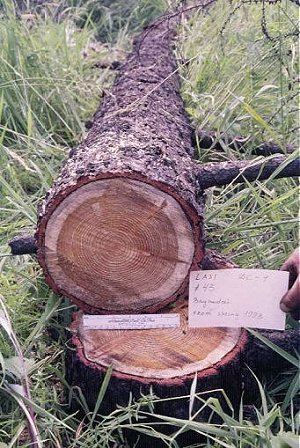
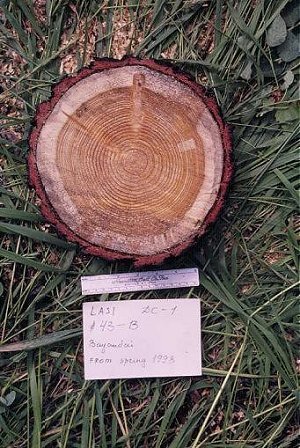

|
Decay class one boles usually have no decay, fine twigs remaining, and complete bark coverage. The sapwood and heartwood are clear or slightly blue stained. Moss is absent. |

|

|
Decay class two boles are slightly decayed with most of the bark present but no fine twigs. The sapwood is rotted, but the heartwood is mostly sound. |

|
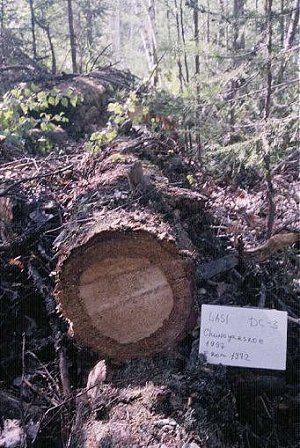
|
Decay class three boles are moderately decayed with some bark present but only stubs of branches remaining. Where the bark is gone, some sloughing of the outer wood is apparent. The sapwood and heartwood show strong signs of decay. But the bole still can support itself. |
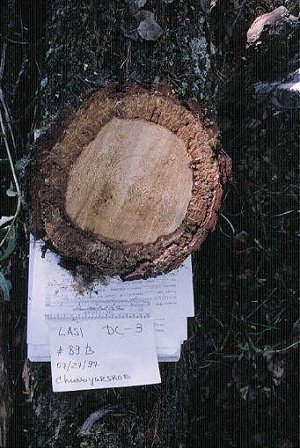
|
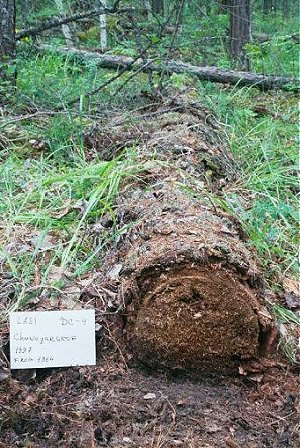
|
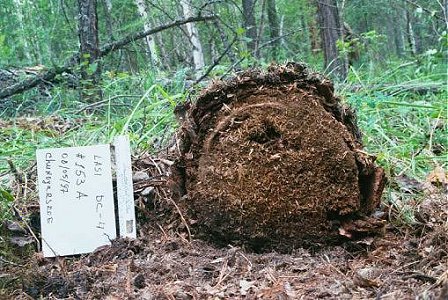 Decay class four boles can no longer support themselves. Frequently, all the bark is gone. The sapwood is often absent, and the deep red-brown heartwood crumbles into chunks upon handling. Although, the bark is gone, the parts of it can still be found under the bole, especially if the tree served as a log since it died. The bark can be used to identify larch among the other decayed boles. |
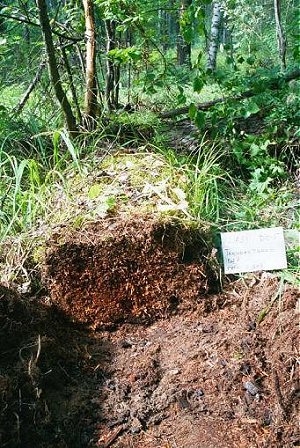
|
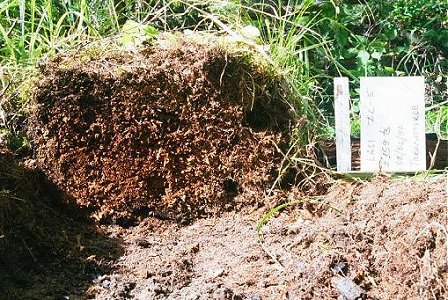 Decay class five boles are detected only by their moss or grass outline on the forest floor. The cross section of the bole is no longer round but elliptical, and the bark is completely absent. The wood resembles red powder with little discernible structure or sign of rings. The bark may remain under the log through entire process of log deterioration and serve as a species identification on the late stages of decay. |